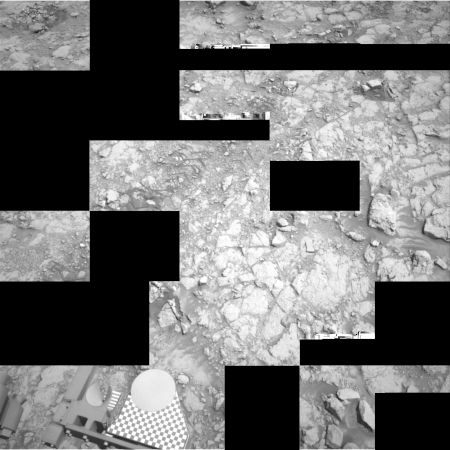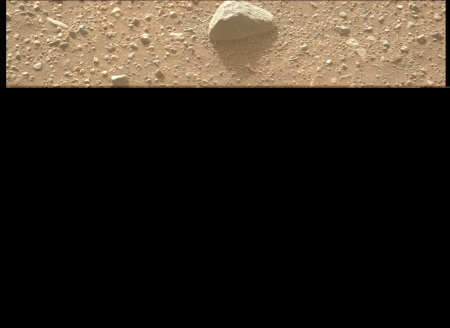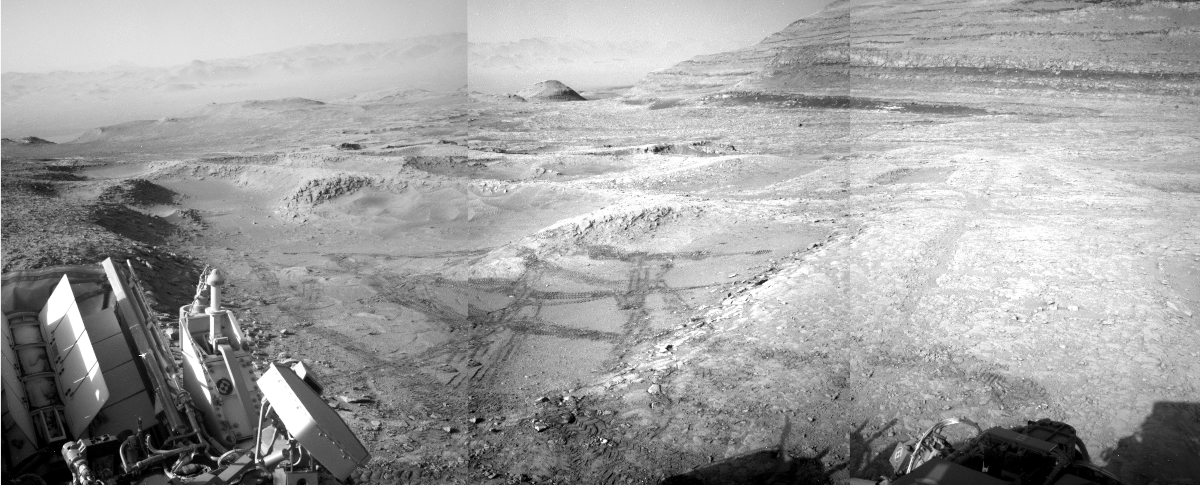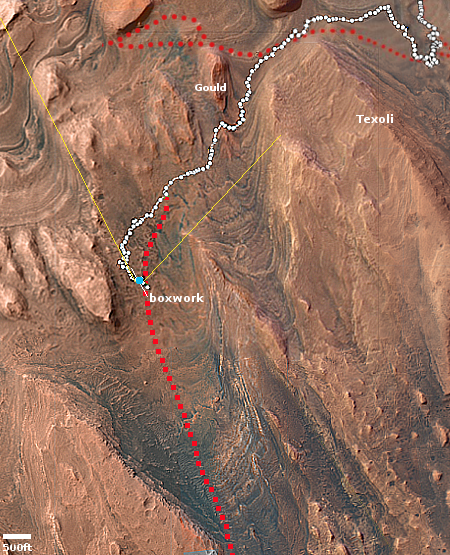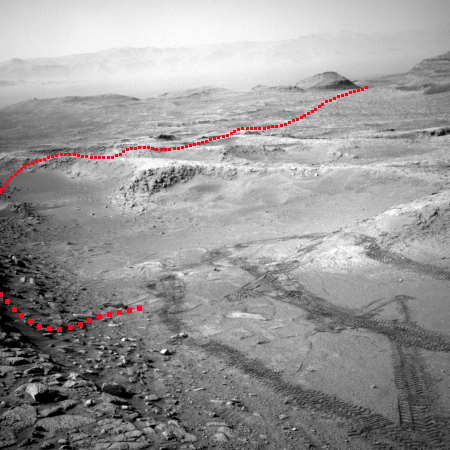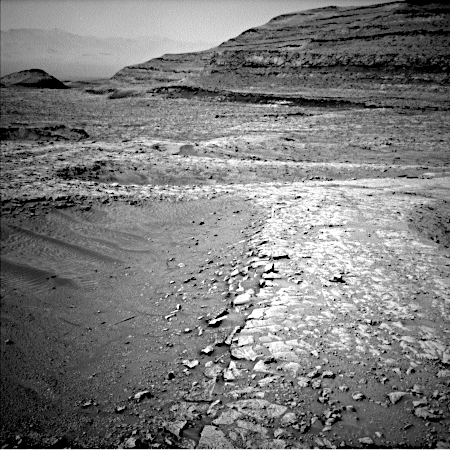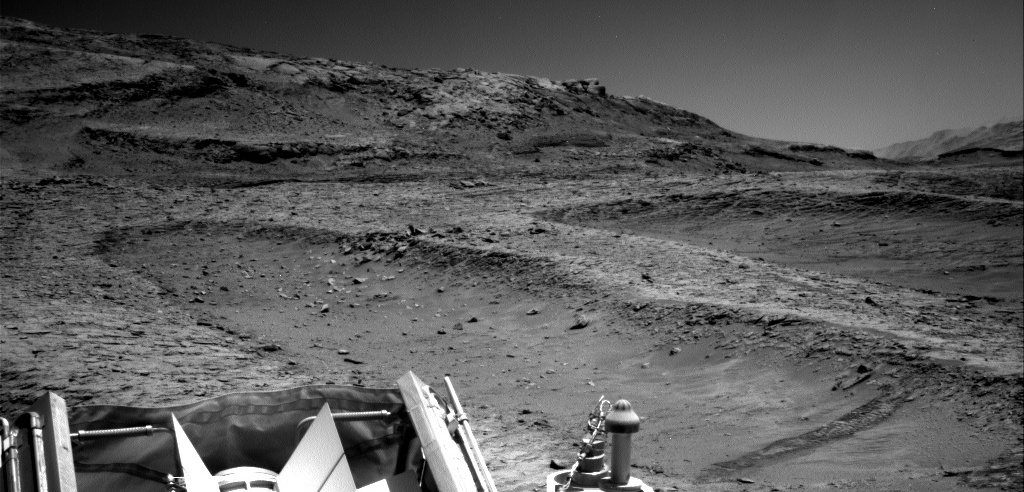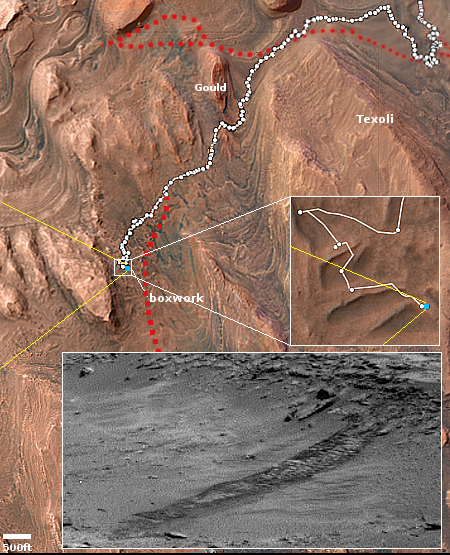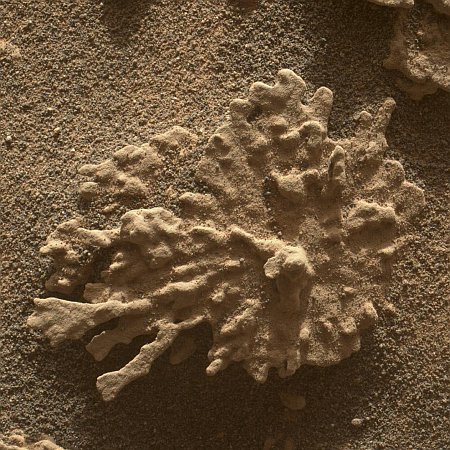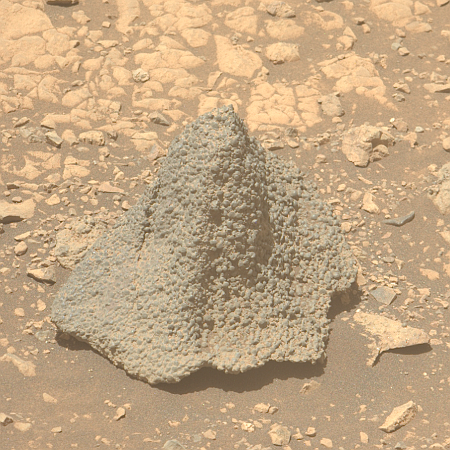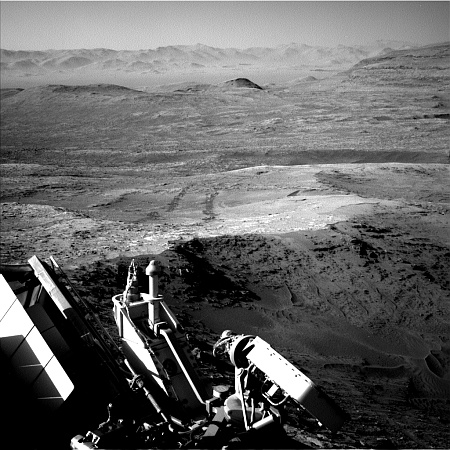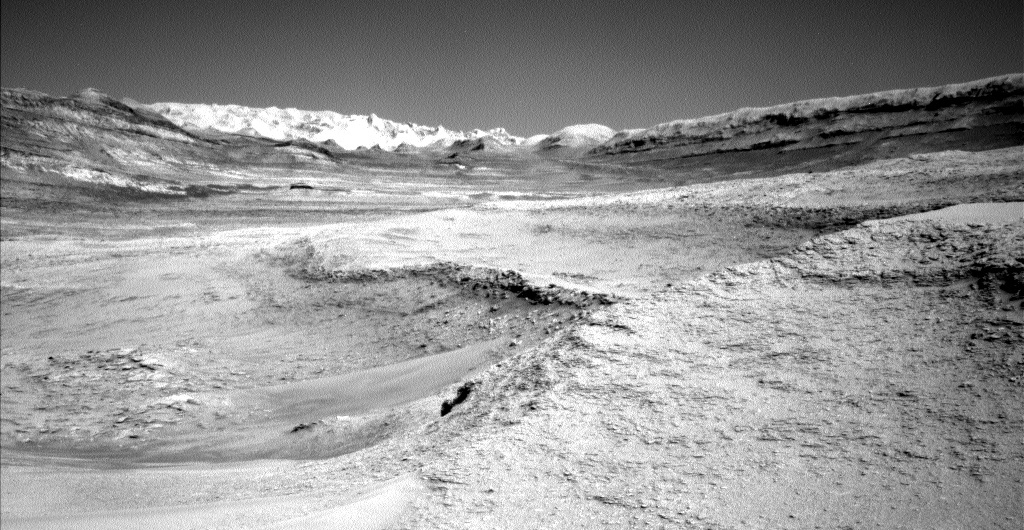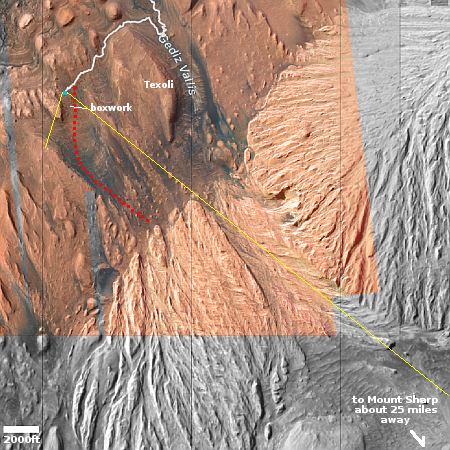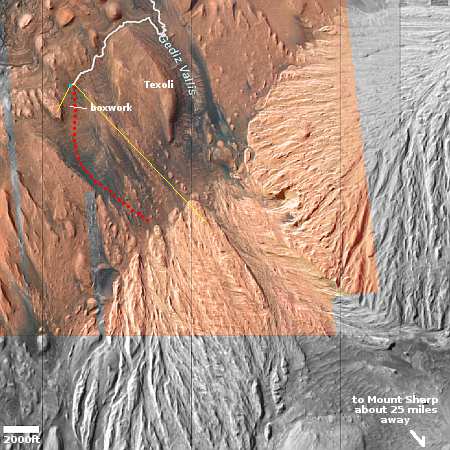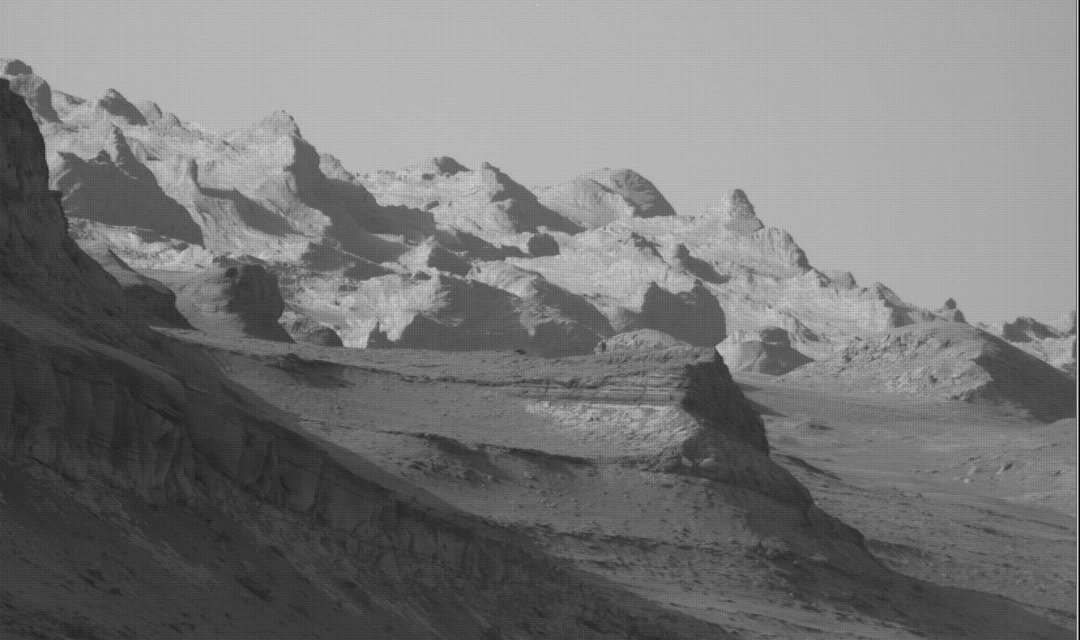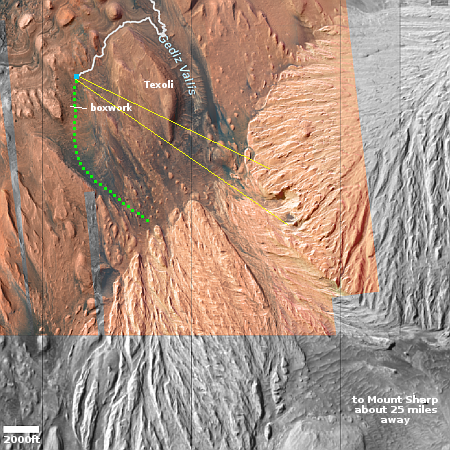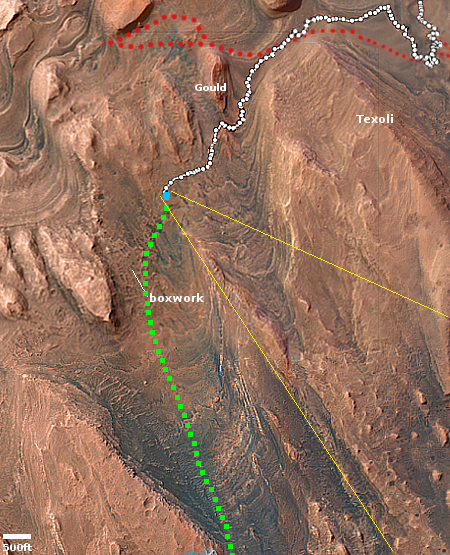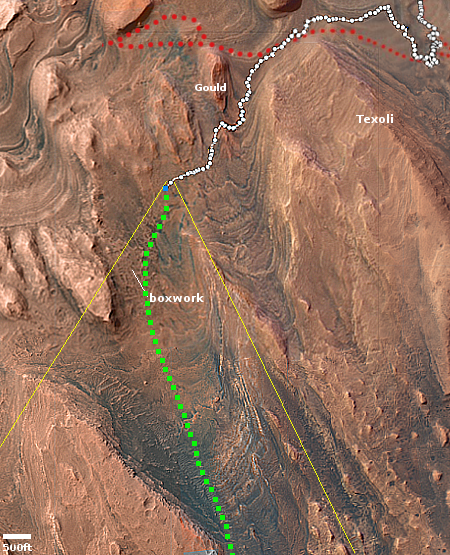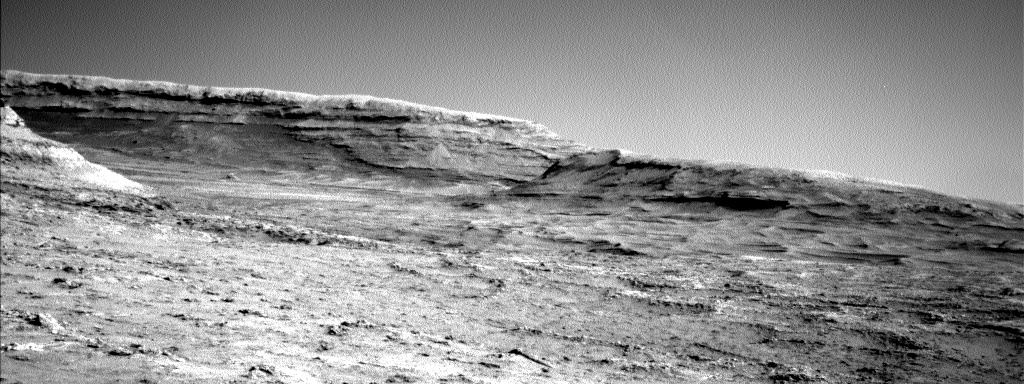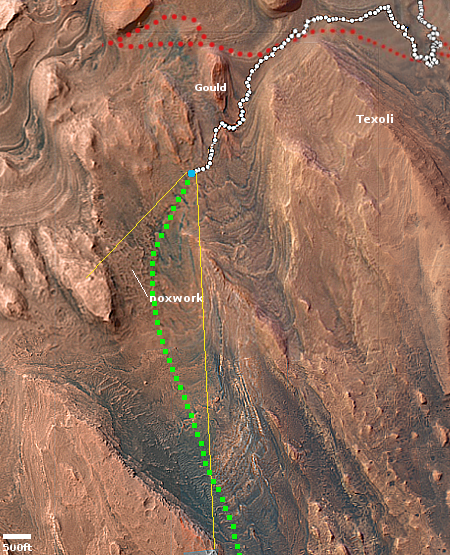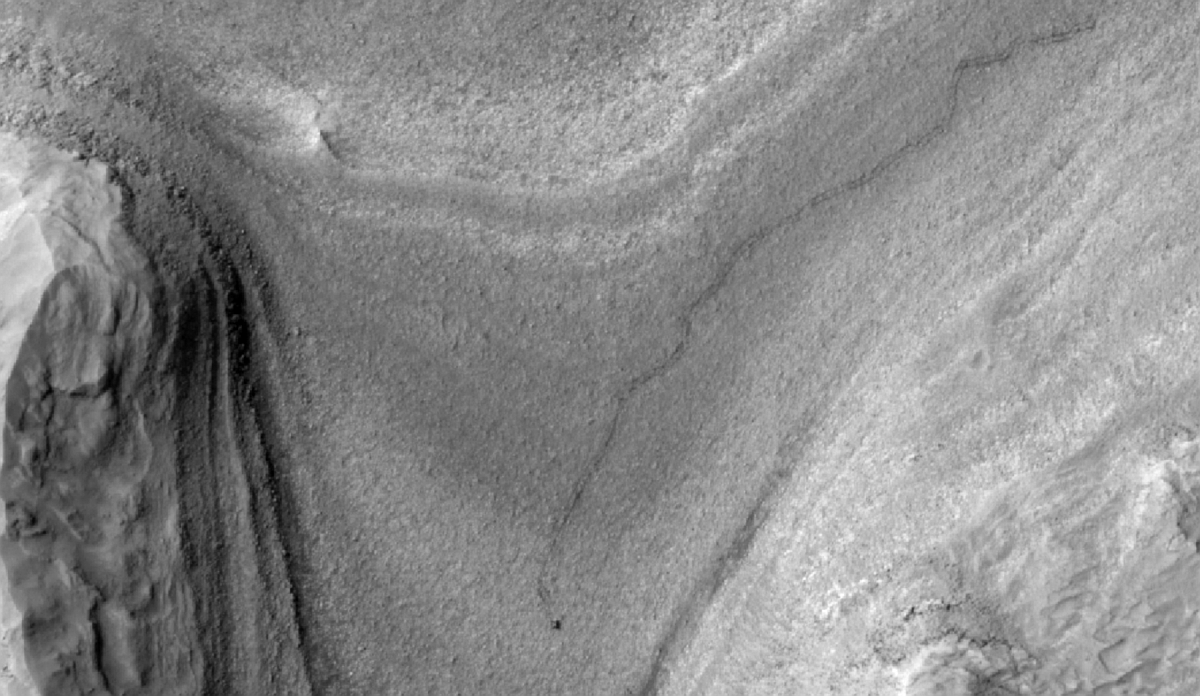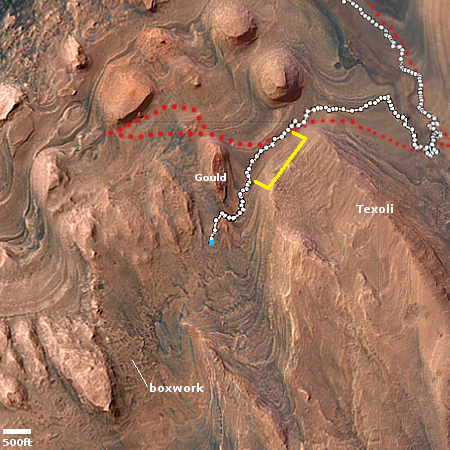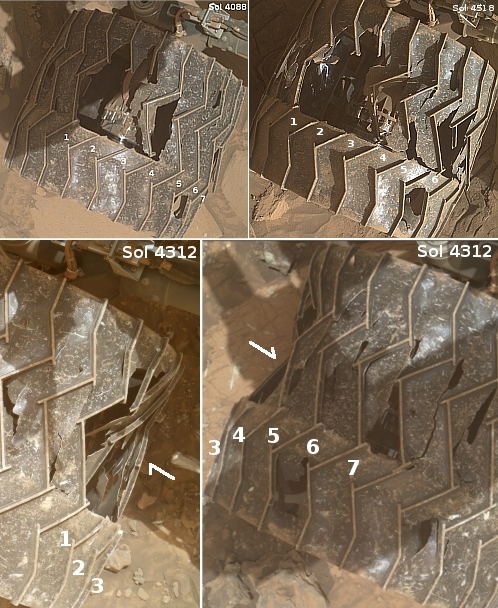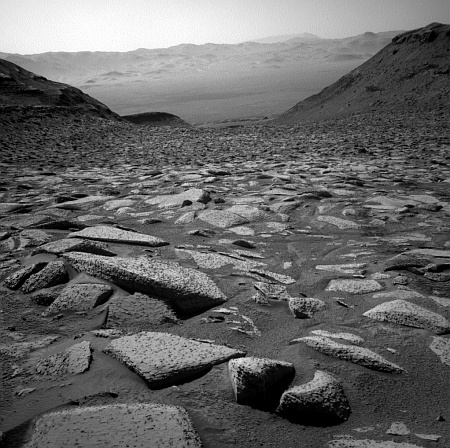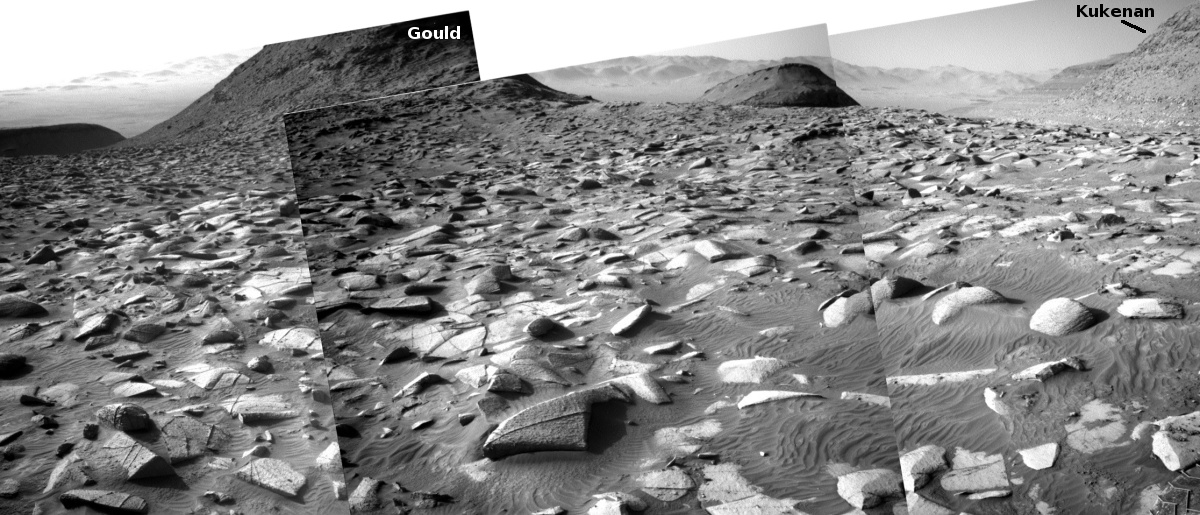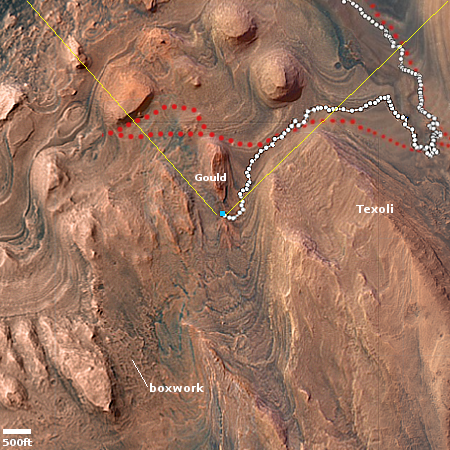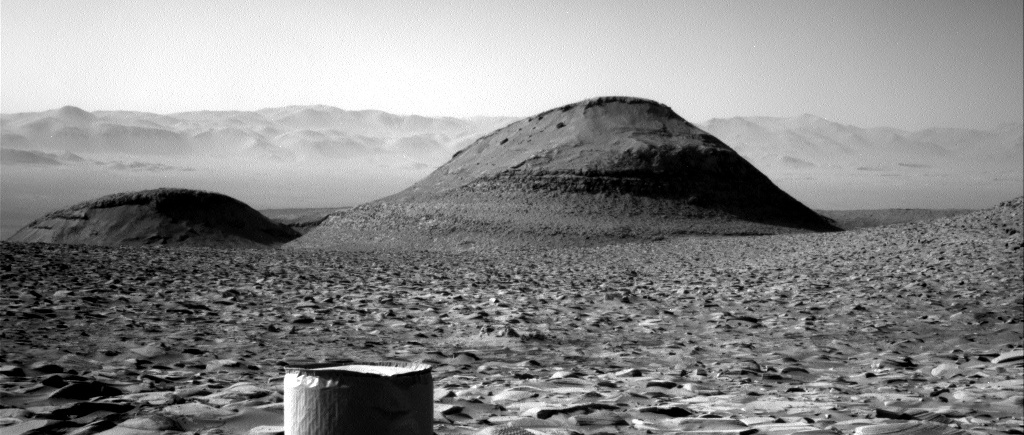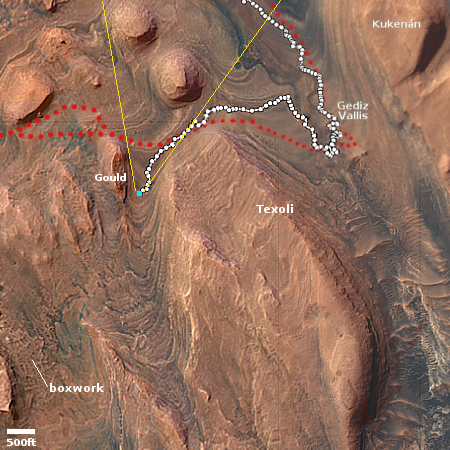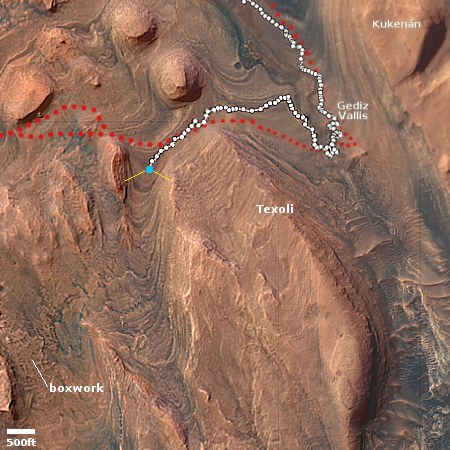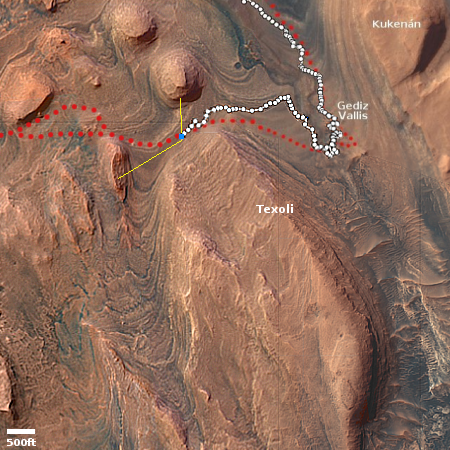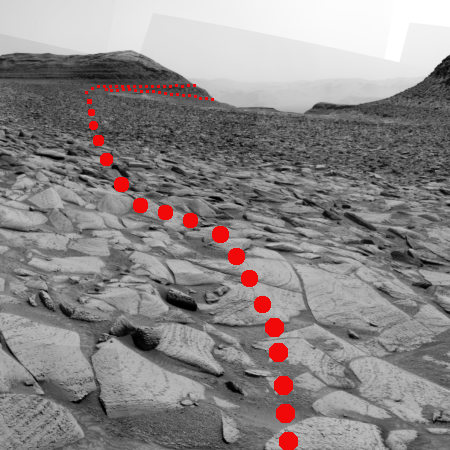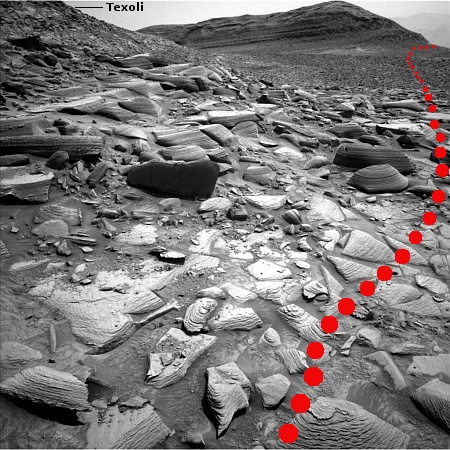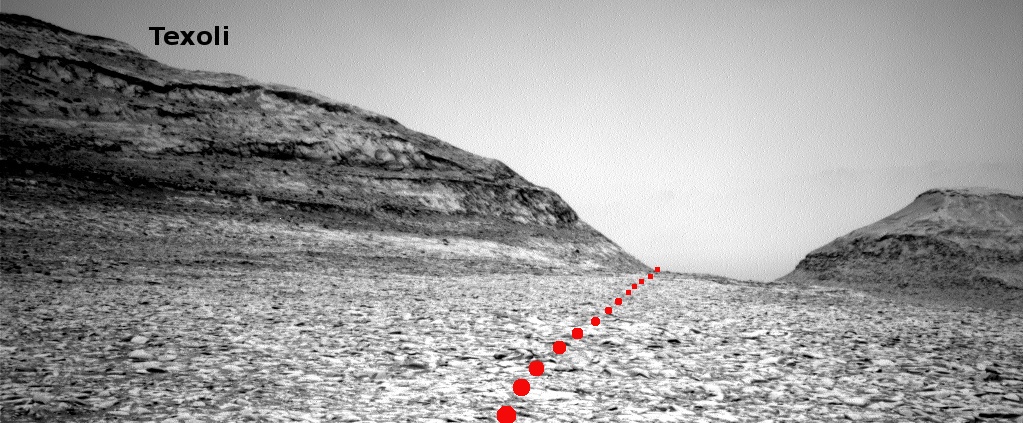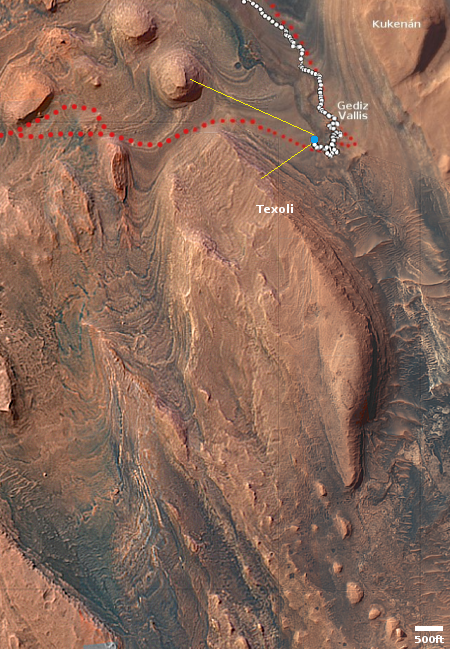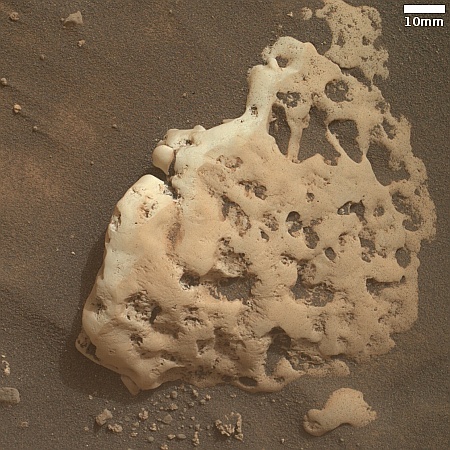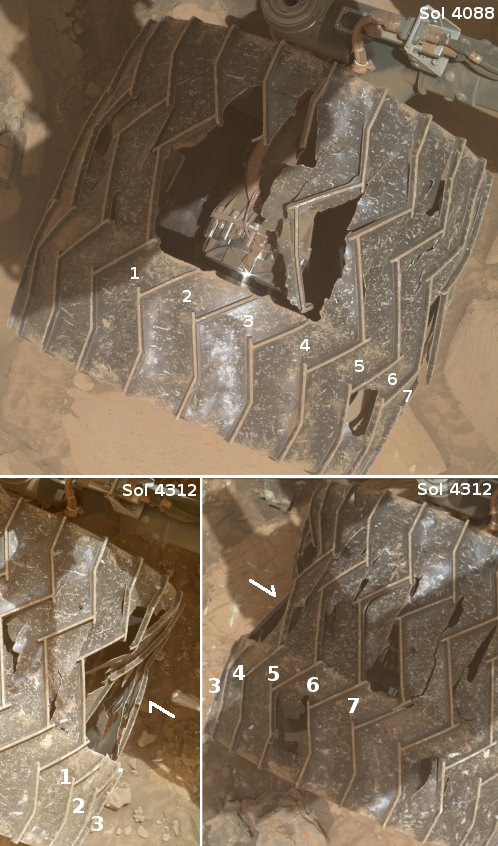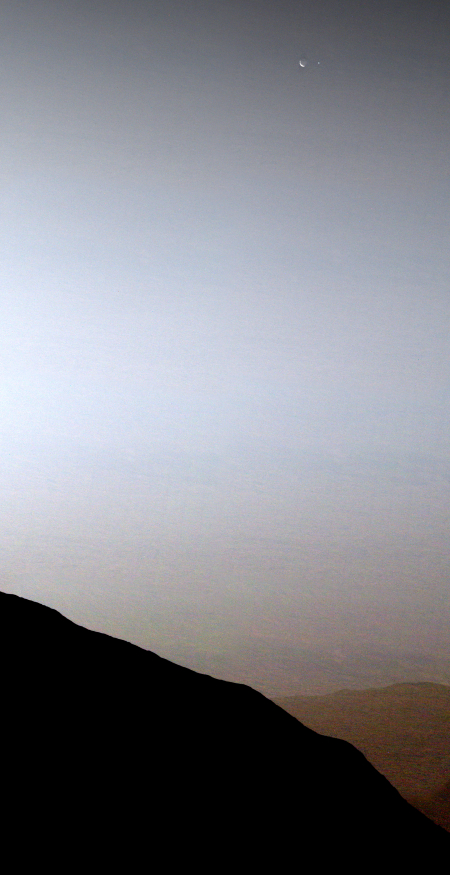The three week communications blackout from Mars has begun
The two images to the right, both downloaded today (here and here) from the Mars rovers Curiosity (top) and Perseverance, illustrate quite clearly the beginning of the three-week-long communications blackout from Mars caused every two years when the orbits of Earth and Mars places the Sun in-between. As the Curiosity science team noted in a December 22, 2025 update:
This holiday season coincides with conjunction — every two years, because of their different orbits, Earth and Mars are obstructed from one another by the Sun; this one will last from Dec. 27 to Jan. 20. We do not like to send commands through the Sun in case they get scrambled, so we have been finishing up a few last scientific observations before preparing Curiosity for its quiet conjunction break.
Apparently engineers were able to squeeze data and images from Mars for a few extra days, but the incomplete nature of these two pictures — combined with the lack of any other new images today — tells us that the blackout has definitely begun. That they were able to get these additional images after conjunction began suggests the blackout might also end a bit earlier than expected.
Though there is always a concern that something could go wrong while communications are blocked, the risks are small. The science teams for all the Mars orbiters and rovers have dealt with this situation now almost a dozen times since operations became routine there more than a quarter century ago.
The only spacecraft at real risk this conjunction is Maven. Contact was lost from it in early December for unknown reasons, and all efforts to regain communications have so far failed. All engineers know from the little data they have gotten back is it appears to be tumbling. This three week blackout will make any chance of recovery extremely unlikely.
The two images to the right, both downloaded today (here and here) from the Mars rovers Curiosity (top) and Perseverance, illustrate quite clearly the beginning of the three-week-long communications blackout from Mars caused every two years when the orbits of Earth and Mars places the Sun in-between. As the Curiosity science team noted in a December 22, 2025 update:
This holiday season coincides with conjunction — every two years, because of their different orbits, Earth and Mars are obstructed from one another by the Sun; this one will last from Dec. 27 to Jan. 20. We do not like to send commands through the Sun in case they get scrambled, so we have been finishing up a few last scientific observations before preparing Curiosity for its quiet conjunction break.
Apparently engineers were able to squeeze data and images from Mars for a few extra days, but the incomplete nature of these two pictures — combined with the lack of any other new images today — tells us that the blackout has definitely begun. That they were able to get these additional images after conjunction began suggests the blackout might also end a bit earlier than expected.
Though there is always a concern that something could go wrong while communications are blocked, the risks are small. The science teams for all the Mars orbiters and rovers have dealt with this situation now almost a dozen times since operations became routine there more than a quarter century ago.
The only spacecraft at real risk this conjunction is Maven. Contact was lost from it in early December for unknown reasons, and all efforts to regain communications have so far failed. All engineers know from the little data they have gotten back is it appears to be tumbling. This three week blackout will make any chance of recovery extremely unlikely.

